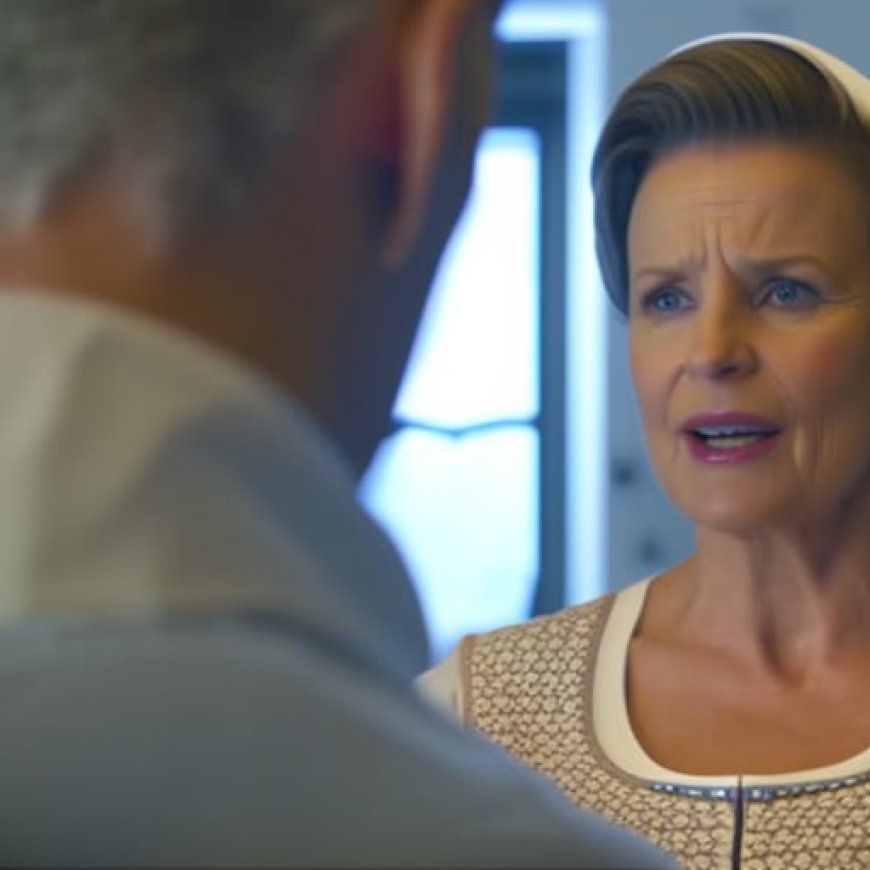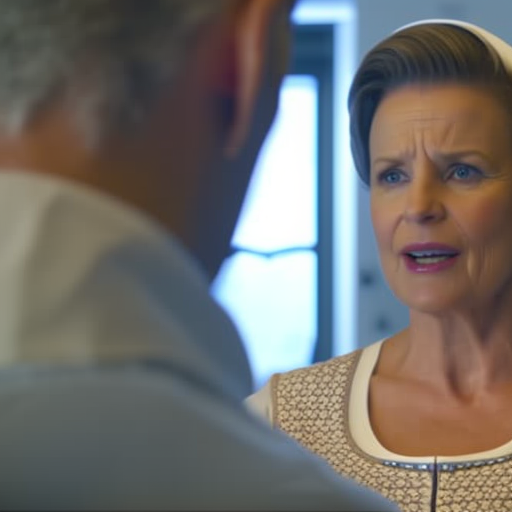Reduce Dutch cancer care inequalities with a ‘Health in All Policies’ approach, say cancer advocates
Reduce Dutch cancer care inequalities with a 'Health in All Policies' approach, say cancer advocates EURACTIV


The Netherlands Confronted with Inequalities in Cancer Screening

The Netherlands has been confronted with a new report showing inequalities in cancer screening between people with high and low incomes. Advocates are calling for public health to be embedded in all types of policies to reduce treatment disparities.
Income-related Treatment Inequality
The Netherlands’ Comprehensive Cancer Organisation (IKNL) told Euractiv that income-related treatment inequality relates to preventing, screening, and caring for cancer patients, they argue for a formal ‘Health in All Policies’ approach.
Earlier this year, a Swedish Institute for Health Economics (IHE) report commissioned by the European Federation of Pharmaceutical Industries and Associations (EFPIA) found that the risk of developing and surviving cancer is shaped by where a person lives. Identifying and reducing inequalities a European patient faces when compared to one of their neighbours in a different EU state has therefore become crucial.
Participation Gap in Cancer Screening
While the Netherlands is among the leading countries in some metrics, it has identified areas of improvement. For example, the participation gap in cancer screening between people with a high and low income was found to be large compared to other EU member states. Consequently, such disadvantaged patients often present more advanced stages of cancer.
“Our health is not just determined by our lifestyle, genes or access to care, but also by such factors as our living environment, residential environment, and income. Policymakers can reduce health differences by taking these factors into account,” a spokesperson for the IKNL told Euractiv.
Misinformation, or Lack of Insurance
Administrative aspects, such as providing correct and understandable information, complemented with targeted and audience-focused prevention programmes should be taken into consideration.
Possible reasons for the socio-economic screening gap include a lack of knowledge or misinformation about cancer screening, a person’s migration background, being un-insured, or under-insured, and having a low health literacy, the spokesperson said.
They added that it’s also important for health to be considered alongside other policy areas too.
“The resulting policy is referred to as Health in All Policies (HiAP). Health care providers can reduce inequalities by ensuring patient-centred care, taking health literacy and potential barriers into account,” the spokesperson said, highlighting that a person’s health is not only determined by their lifestyle, genes, or access to care.
Ongoing Initiatives
According to the IKNL’s spokesperson, there are a number of ongoing initiatives being taken to continue reducing inequalities in cancer care. As a knowledge institute and manager of the Netherlands Cancer Registry, the IKNL is one of the initiators of the Netherlands Cancer Agenda in which inequalities are considered in all themes and actions.
The spokesperson highlighted that a few years ago, the Health Ministry started funding municipalities to stimulate a local integrated approach to reduce health inequalities as part of the National Prevention Program. The programme, GezondIn, provided tailored advice and support on local approaches to health disparities to 164 municipalities.
“Despite all these initiatives, lots of work has to be done on reducing disparities, and that is what we, as IKNL, with our data-driven insights, try to illuminate,” the spokesperson said.
However, the IKNL also frequently spotlights areas the Netherlands excels at. For instance, the Netherlands places a Nutri score on the packaging of products to try to make it clearer for people to differentiate between healthy and unhealthy food.
The Dutch have also used HPV vaccination buses and pop-up vaccination stops during the HPV immunisation campaign to reach the target group of young adults.
Using NGS in More Than Half of Biopsies
The IHE report mentioned several areas the Netherlands, along with other countries, is considered to be a leader in. Denmark and the Netherlands were the only countries to report the use of next-generation sequencing (NGS), a technique that offers oncologists more comprehensive diagnostic information that can be used to offer patients more targeted treatments in more than half of all biopsies.
In contrast, no biopsy samples are analysed with NGS in Czechia and Slovakia. The report also found that while there are over 2,000 cancer survivors per 100,000 inhabitants in the Netherlands, this figure drops to fewer than 1,300 survivors in Cyprus.
Political commitment at the EU level to tackle cancer has received a significant boost with the publication of Europe’s Beating Cancer Plan (EBCP) in 2021, the IHE report said. One of the key elements of this plan entails improving access to innovative and evidence-based treatment.
Pharma Companies as Partners
Euractiv asked Roche Netherlands General Manager Andrew Plank whether pharmaceutical companies have a role to play in reducing cancer care inequalities. Plank said that Roche made a voluntary commitment to file its medicines, including its oncology medicines, for pricing and reimbursement (P&R) within two years of EU approval in all EU member states.
“That’s the first step we can take to make sure that any innovation we bring to market, we’re as quick as possible to give every health system the opportunity to adopt that medicine to benefit patients,” said Plank.
However, Plank highlighted the importance of working in synergy with governments since they know where their patients live and work and how to properly deliver their care.
“We can provide a solution, but we’re not a care delivery arm. So we want to partner. We want to collaborate. We want to remove barriers,” said Plank who described the overall mission as something that needs to be done together with governments.
“It’s not something the sector or a single company like Roche can accomplish on its own,” he said.
Read more with Euractiv
SDGs, Targets, and Indicators in the Article
-
SDG 3: Good Health and Well-being
- Target 3.4: By 2030, reduce by one-third premature mortality from non-communicable diseases through prevention and treatment and promote mental health and well-being.
- Indicator 3.4.1: Mortality rate attributed to cardiovascular disease, cancer, diabetes, or chronic respiratory disease.
- Indicator 3.4.2: Suicide mortality rate.
The article discusses inequalities in cancer screening and treatment, which are relevant to SDG 3’s target of reducing premature mortality from non-communicable diseases. The indicators mentioned in the article, such as the participation gap in cancer screening and the risk of developing and surviving cancer, can be used to measure progress towards this target.
-
SDG 10: Reduced Inequalities
- Target 10.2: By 2030, empower and promote the social, economic, and political inclusion of all, irrespective of age, sex, disability, race, ethnicity, origin, religion or economic or other status.
- Indicator 10.2.1: Proportion of people living below 50 percent of median income.
- Indicator 10.2.2: Poverty gap ratio.
The article highlights income-related treatment inequality in cancer care and calls for a ‘Health in All Policies’ approach to reduce disparities. This is connected to SDG 10’s target of reducing inequalities, and the indicators mentioned in the article, such as the participation gap in cancer screening between people with high and low incomes, can be used to measure progress towards this target.
-
SDG 17: Partnerships for the Goals
- Target 17.17: Encourage and promote effective public, public-private, and civil society partnerships, building on the experience and resourcing strategies of partnerships.
- Indicator 17.17.1: Amount of United States dollars committed to public-private and civil society partnerships.
The article discusses the role of pharmaceutical companies in reducing cancer care inequalities and highlights Roche’s voluntary commitment to filing its medicines for pricing and reimbursement. This is connected to SDG 17’s target of promoting effective public-private partnerships, and the indicator mentioned in the article, the commitment of pharmaceutical companies to partnerships, can be used to measure progress towards this target.
Table: SDGs, Targets, and Indicators
| SDGs | Targets | Indicators |
|---|---|---|
| SDG 3: Good Health and Well-being | Target 3.4: By 2030, reduce by one-third premature mortality from non-communicable diseases through prevention and treatment and promote mental health and well-being. | Indicator 3.4.1: Mortality rate attributed to cardiovascular disease, cancer, diabetes, or chronic respiratory disease. Indicator 3.4.2: Suicide mortality rate. |
| SDG 10: Reduced Inequalities | Target 10.2: By 2030, empower and promote the social, economic, and political inclusion of all, irrespective of age, sex, disability, race, ethnicity, origin, religion or economic or other status. | Indicator 10.2.1: Proportion of people living below 50 percent of median income. Indicator 10.2.2: Poverty gap ratio. |
| SDG 17: Partnerships for the Goals | Target 17.17: Encourage and promote effective public, public-private, and civil society partnerships, building on the experience and resourcing strategies of partnerships. | Indicator 17.17.1: Amount of United States dollars committed to public-private and civil society partnerships. |
Behold! This splendid article springs forth from the wellspring of knowledge, shaped by a wondrous proprietary AI technology that delved into a vast ocean of data, illuminating the path towards the Sustainable Development Goals. Remember that all rights are reserved by SDG Investors LLC, empowering us to champion progress together.
Source: euractiv.com

Join us, as fellow seekers of change, on a transformative journey at https://sdgtalks.ai/welcome, where you can become a member and actively contribute to shaping a brighter future.







